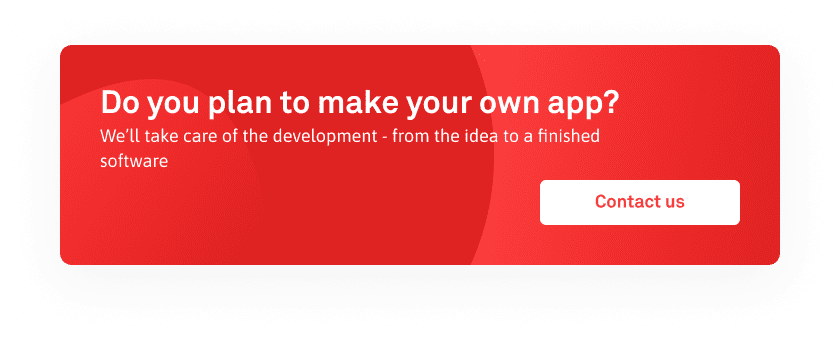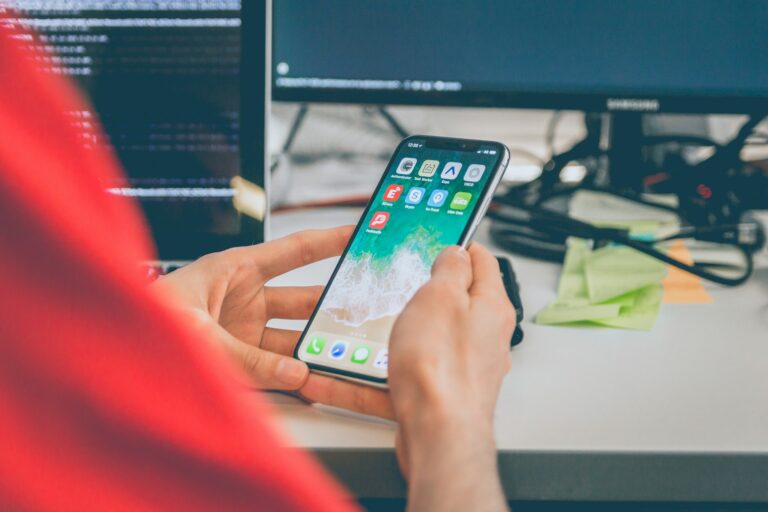Building a mobile app can be one of the most rewarding achievements to any business, brand, or organization. Not only will it make your concept easily accessible to millions of people around the world, but it will give you yet another opportunity to profit off your greatest ideas.
As rewarding as a mobile app can be, many brands will make a wide range of mistakes throughout the development process. These mistakes can prove costly to the development time, budget, and quality of your mobile app.
To help prepare you for a successful development process, we’ve outlined nine of the biggest mistakes we see businesses and brands make before, during, and after the mobile app development process. We’ll also detail how you can avoid making these mistakes, allowing you to remain proactive throughout the process.
Without further ado, let’s take a look at the nine most common mistakes you should avoid when developing a mobile app:
1. Failure to identify a need or provide a real solution.
If you’ve ever heard of the saying, “There’s an app for that,” then you understand that mobile app users aren’t interested in a mobile app that doesn’t provide a solution to a problem. Our phones and mobile devices are designed for convenience and your mobile app needs to present that in one way or another.
For example, social media makes it easier to connect with others and meet new people, mobile games solve boredom, productivity apps make us more efficient throughout daily life, ecommerce apps give consumers the ability to shop online, and fitness apps make it possible to work out anywhere and anytime.
If you can identify the demand and effectively supply it, users will buy into it eventually.
2. Choosing the wrong developer for the project.
Most business and brand owners won’t have the skills or knowledge to develop a mobile app by themselves. This will almost always require a professional developer to successfully complete the project, which means you’ll likely have to go through the hiring process.
If you want to provide your users with a quality app, hiring the right developer for the job is an excellent place to start. They’ll be able to give you polished advice and guidance throughout the process, allowing you to avoid delays, errors, or inaccuracies.
When hiring a developer, pay attention to their past experience, ensure they understand your vision with the project, confirm they’ll communicate with you throughout the process, and make sure they support app maintenance.
3. Utilizing too many features in your mobile app.
Providing a solution is one thing, but bombarding your users with a wide variety of different features and options is a completely different story. In fact, too many features can easily confuse your users and urge them to cancel out of your app upon opening it.
During the design stage, it might help to make a full list of features you would like to see in your mobile app — try not to leave anything off this list. Once you’ve completed the list, determine which features are core features and which are just “icing on the cake.”
Focusing on the core features should be your top priority. You can always add the “icing” in an update after the app is released, giving users an opportunity to familiarize themselves with the core features.
4. Building an app on the wrong platform.
When business owners and brand ambassadors decide to develop a mobile app, they typically won’t consider which platform they should release their app on. In fact, they’ll likely expect to have a mobile app in both the iOS App Store and Google Play Store.
Unfortunately, this is unrealistic for the majority of mobile app startups. Developing a mobile app on both platforms can be extremely costly and take a large amount of time to complete. In addition to that, each platform will come with a different user base.
Depending on the target audience you’re interested in, one platform might make more sense than the other. For example, Apple users tend to be women, younger, higher-earners and will come with a higher profit share. Android users tend to be men, have a higher market share, and earn less than Apple users.
5. Failing to focus on UI/UX design.
UI/UX design is a term seen thrown around in mobile app development often, especially in today’s digital world. Some developers will go as far as saying UI/UX design, also known as user interface and user experience design, is one of the most important aspects to your app’s success.
If you want to show users you take UI/UX design seriously, it’s imperative you take the following into consideration: visuals, logos, colors, buttons, navigation, fonts, icons, ease-of-use, responsiveness, offline use, and much more.
Ensure your developer understands how imperative this is before starting a project with them! Trust us, users will thank you.
6. Not enough communication.
Communication is important to ensure a smooth-sailing process, whether you’re hiring a single developer or a team of developers. Without it, your project can lose steam and fall off track without warning. Before you know it, your project will be in a difficult hole to dig out of.
Ideally, brand owners should be notified every time an update is made in the process. If your developers truly care about the organization, transparency, and communication from all ends of the table, they’ll utilize project management methods or frameworks like Agile and Scrum.
You should never be wondering where your mobile app currently stands in development and should have no issues getting a hold of your developer if you have questions or changes to make.
7. No real monetization strategy.
Developing an app without a monetization strategy could lead to a massive loss of profit, especially right out of the gate. The later you are to the “monetization party,” the more difficult it is to see consistent and frequent revenue.
Luckily, there is a wide range of monetization strategies to choose from and you’ll have the opportunity to deploy a combination of them. Some of the most common strategies used today are freemium apps, in-app purchases, advertisements, sponsorships, investors, and paid apps.
Certain strategies work best for certain types of apps, but a quality developer will be able to nudge you in the right direction with your mobile app.
8. Neglecting or skipping the testing process.
Once the developer has completed building the mobile app, it doesn’t mean your app is ready to be released and downloaded by users. There will be two things you’ll want to take care of before thinking about a release, the first thing being testing.
The testing process is designed to identify and highlight any errors, inconsistencies, bugs, and fixes that need to be made before it’s ready to be utilized by users. It’s always best to find a solution to these errors before the users experience them — especially since that’s one of the major reasons a user will delete an app after downloading it.
9. Not preparing your app and development team for proper maintenance.
Next to testing your app, preparing your app for maintenance is the second thing best done before the release of your app. In a perfect world, this will be handled by the same developer or team that has been with you every step of the way.
Maintenance is essential because you never know what your app will experience once it hits the store. In the event something goes wrong, finding a swift solution can help prevent users from deleting the app. Of course, that will all depend on how reliable your developers are — if they’re even around anymore.
With all the mistakes that could be made during the mobile app development process, every single one of them can be avoided with due diligence.
If you’re looking for a mobile app developer that will stick with you from start to finish — and beyond — then we’ve got you covered.
Contact us today to receive a free consultation and quote for your project!
—
Photo by John Schnobrich on Unsplash



